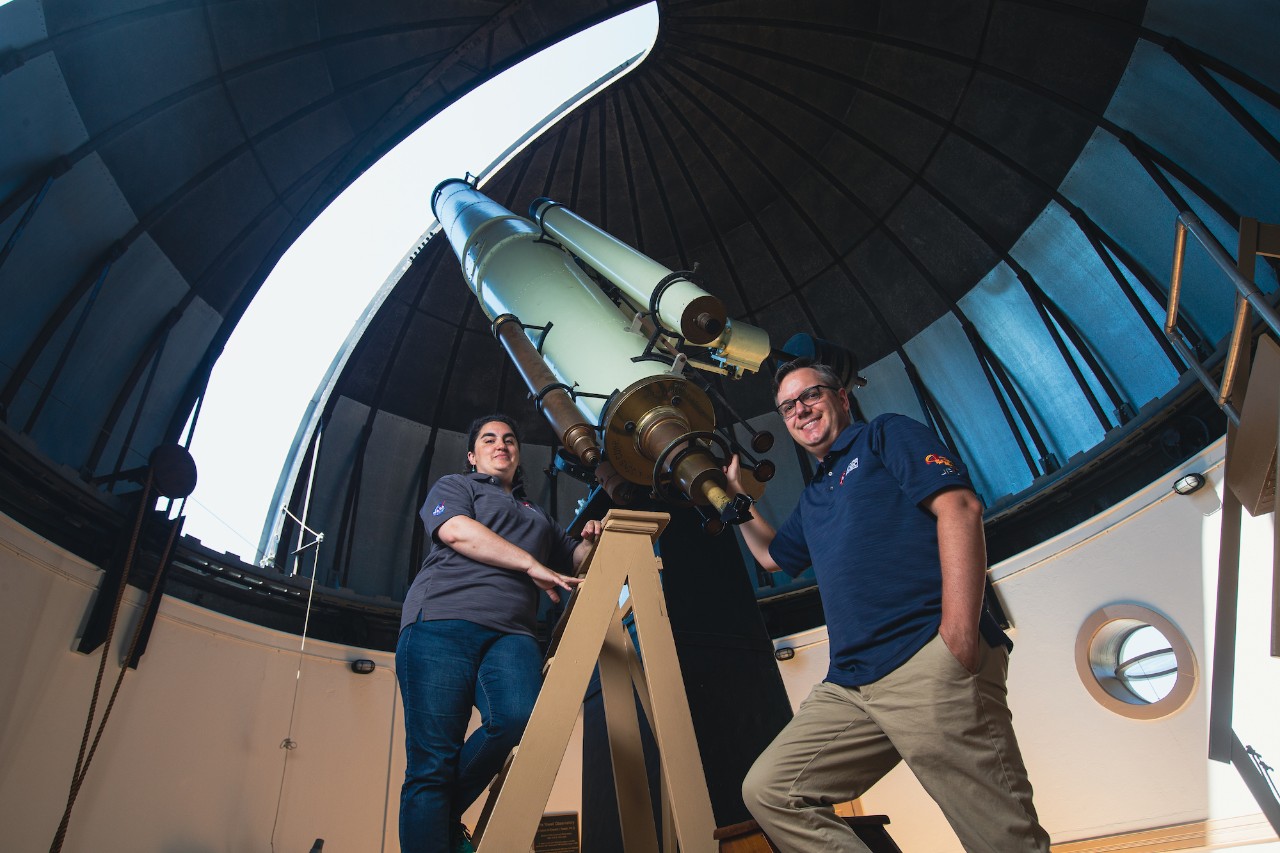
Earth.com: The search for life on Mars continues
UC Geosciences professor and students contribute to Perseverance rover mission
Earth.com highlighted the University of Cincinnati's contribution to NASA's search for ancient life on Mars.
UC Associate Professor Andy Czaja and his students Andrea Corpolongo, Brianna Orrill and Sam Hall are members of the science team using the Perseverance rover and its helicopter sidekick to explore the red planet.

An illustration of the rover Perseverance, which has spent three years exploring Mars. Illustration/NASA/JPL
Czaja teaches in the Department of Geosciences in UC’s College of Arts and Sciences. He is a paleobiologist and astrobiologist.
“Perseverance has excelled. It’s been fantastic. It has such capable instrumentation for doing the geology work. It’s able to explore distant objects with its zoom lens cameras and can focus on tiny objects at incredible resolution,” Czaja said.
Along the way, the mission has recorded a number of firsts: first powered flight, first recorded sounds of Mars, the longest autonomous drive (nearly a half-mile) and new discoveries about the planet’s geology, atmosphere and climate.
“I hope that Perseverance has just whetted our appetite for more Martian exploration. And bringing back samples will allow us to study Mars and search for evidence of ancient life with instruments that haven’t even been invented yet for years and years to come,” Czaja concluded.
Featured image at top: UC doctoral student Andrea Corpolongo, left, and UC Associate Professor Andy Czaja are on the NASA science team exploring Mars with the Perseverance rover. Photo/Andrew Higley/UC Marketing + Brand
Related Stories
Tips to avoid headaches this holiday season
December 15, 2025
A University of Cincinnati migraine expert offered a list of potential headache triggers around the holidays, and how you can try to avoid them, to 91.7 WVXU News. "There are a number of different factors that make this a very headache provocative time," said Vincent Martin, MD, professor of clinical medicine at the University of Cincinnati's College of Medicine and director of the Headache and Facial Pain Center at the Gardner Neuroscience Institute.
Local couple uses royalties from children's books to give gifts to kids in need
December 15, 2025
A local couple has found a unique way to give back to those in need this holiday season. Vic and Laura Troha wrote two children's books together, and this year, they are using the proceeds to buy Christmas gifts for Hamilton County foster kids. The couple are both graduates of the University of Cincinnati's College of Allied Health Sciences and met the day they graduated.
The hottest toys this holiday season
December 15, 2025
Local 12 turned to Lindner College of Business associate professor-educator of marketing Roseann Hassey to explain what’s got the trendiest items flying off the shelves.
